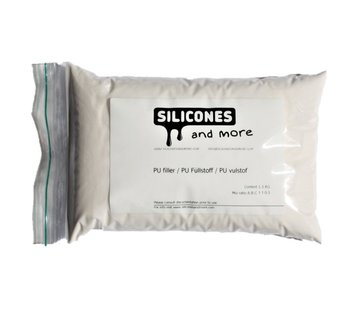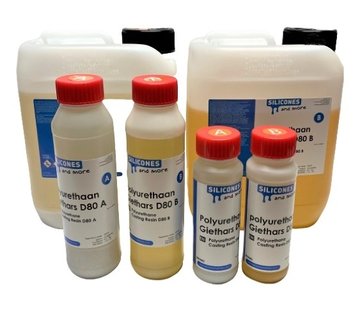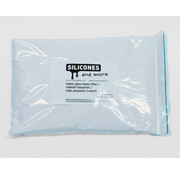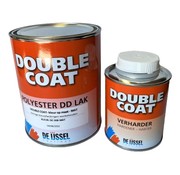Filler glass beads (hollow) [250 gram]
With this filler you get a lighter cast and consume less resin.
Glass beads are very small perls of glass. The beads are so small that they can not be distinguish with the naked eye. The material looks like flour.
The beads are normally used in casting materials to make them lighter and to safe the more expensive resin or silicone.
Glass beads can be used with silicone rubber, polyurethane, gypsum, acrylic resin and other resins..
- Extend the working time
- Pour thicker layers
- Produces a lighter cast
Used in epoxy:
- ideal for epoxy below the waterline as these glass beads do not attract water.
- These glass beads increase the density of (epoxy) foam
- increase adhesion with soft wood
- Good compression properties. Good density / compression ratio
Technical properties
- Colour White
- Average diameter: 70 micrometers
- Density: 120 g/cm³
- Effective density: 200 g.cm³
- Glass temperature: 980 oC
- Thermal conductivity coefficient: 0.04 W/mK
- pH value: 7
- Oil absorption:
- 40 grams of oil in 100 cm³ of glass beads
- 160-200 grams of oil in 100 grams of glass beads
- Glass beads contain hydrophobic coating.
Processing
Glass beads are lighter mainly used in casting materials for lowering the density.
Mixed silicone rubber with glass beads, for example, are suitable for the manufacturing of flexible fish bait. The addition of glass beads also increases the hardness of the silicone. The tensile strength will lower hoewever. The recommended amount of pearls to add is no more than 12% of the mass of the A component.
For example: 350 grams silicone C 20 A + 5 grams of silicone C 20 B + 30 grams of glass beads.
This gives approximately an increase in hardness of 10 Shore points. A very rough estimate therefore gives 1 shore point increase per % glass bead.
The Polyurethane Casting System D80 mixed with glass beads is suitable for the manufacturing of lightweight castings that will even float on water!
We usually recommend no more than 25% (mass) glass beads to be added to the resin. The exact amount of course depends on the used material and the desired results. for example: 80 grams PU resin D 80 A component + 80 grams PU resin D 80 B component + 40 grams of glass beads.
Please note: We recommend a maximum of 25% (wt) glass beads to be added to the two components. When you add half to the A component and the other half to the B component, it is easier to mix the material.
Special instructions
The dry unmixed density of the beads is between 0.12- 0.20 g/cm³ That means 250 grams of pearls has a volume of about about 1.25 to 2 liters.
Please note: The thermal conductivity of glass is very low. please keep this in mind when using highly exothermic resins.
The strength of the PU casting is unfortunately less if you add glass beads. The cast is will become more crumbly.
Shelflife
If sored on a dry location this filler has an indefenite shelf life.
Product information


![Filler glass beads (hollow) [250 gram]](https://cdn.webshopapp.com/shops/100888/files/331013140/890x820x2/filler-glass-beads-hollow-250-gram.jpg)
 Product information sheet Filler glass beads (hollow)
Product information sheet Filler glass beads (hollow)![Filler glass beads (hollow) [250 gram]](https://cdn.webshopapp.com/shops/100888/files/331013140/500x460x2/filler-glass-beads-hollow-250-gram.jpg)





